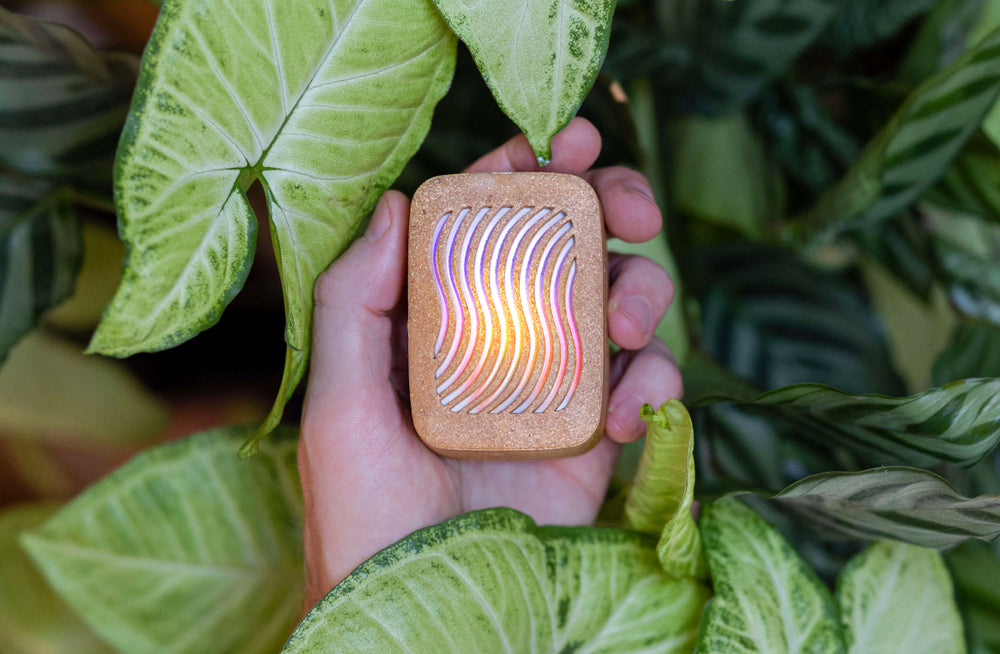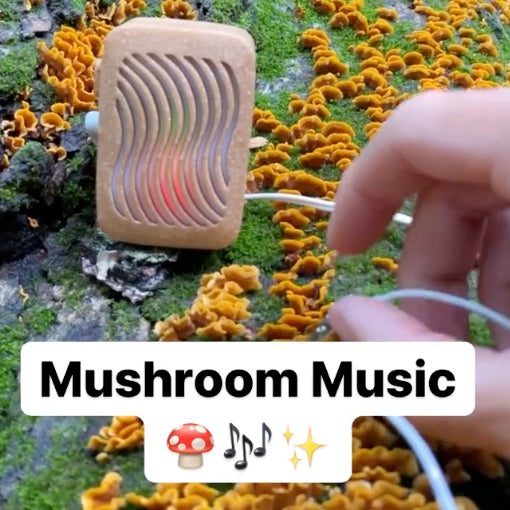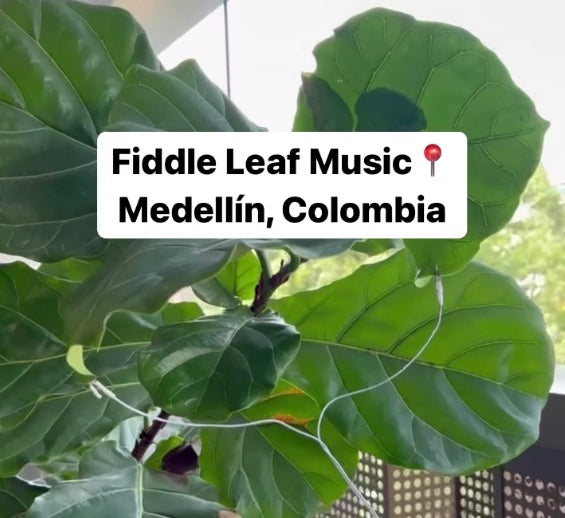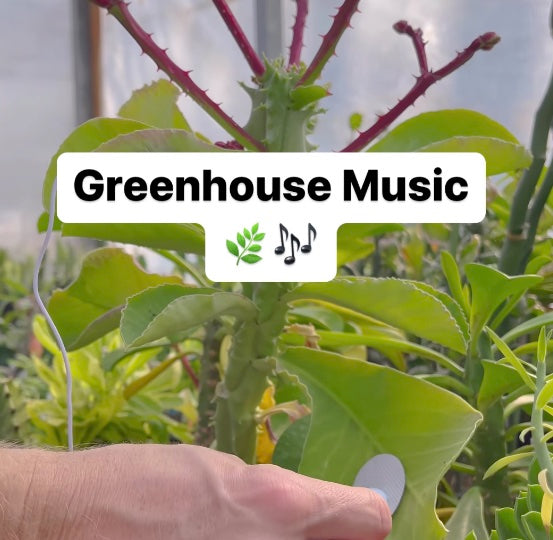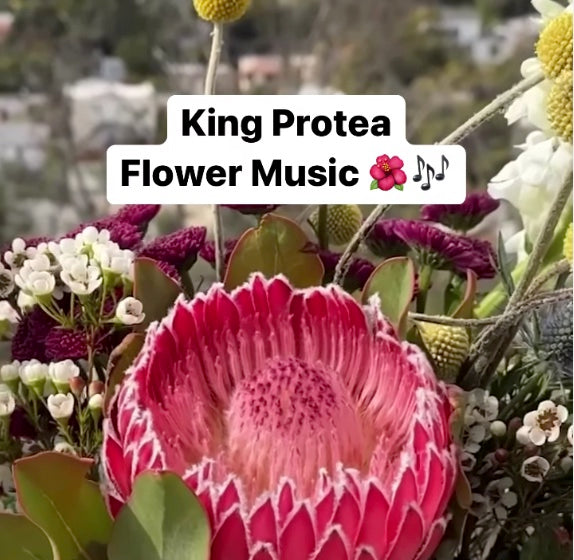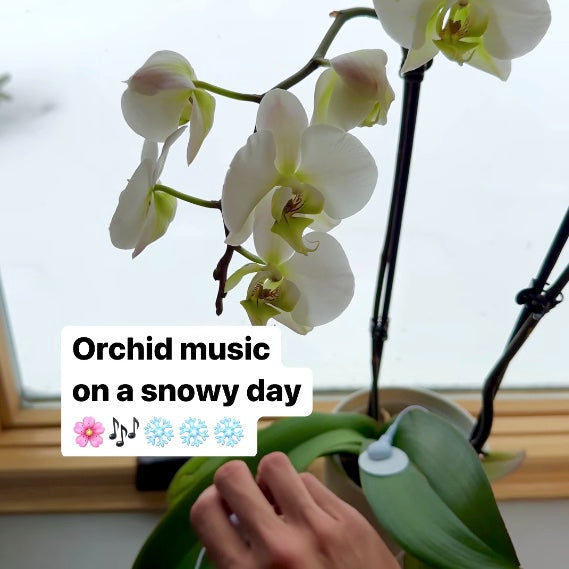The Science Behind PlantWave
You may be wondering, how does PlantWave work? Would plants sound like flutes if we had superhuman hearing? PlantWave makes music by translating plant biodata into sound. The music is a tool for monitoring a plant’s activities and there’s a lot we can learn from listening to these harmonious sounds.
PlantWave uses patented data sonification technology
We’re all familiar with data visualization. It’s when data is represented visually to tell a story. One only needs to look at the weather app on their phone to see this on display. There, colors are used to represent different temperatures or types of precipitation.
Data sonification is similar. However, instead of color, sound is used. In the way clouds are represented as colors on a weather map, plant biodata is represented as notes with a PlantWave. We’ll go deeper into the process of that in a moment.
First, let’s look more deeply at sonification. 
A powerful scientific tool used by NASA
For more than 70 years, data sonification has been used to study everything from earthquakes to the human body. It’s even used by NASA to give us a better understanding of our place in the Universe. Just have a listen to the above sonification of data from our sun. This allows us to experience the flowing exchange of gas on our nearest star as sound.
A powerful storyteller
One of our favorite TikTok stars of late is Tobias Jaeck. He sonifies graphs using his voice, singing the curves and spikes of charts and line graphs of markets and trends. To listen to these graphs is clearly more engaging than just staring at them. By hearing the tones, it becomes super clear how dramatic changes in trends are over time. Just have a listen to him singing global sea levels and you’ll see exactly what we mean.
How PlantWave works




Now that we’re more familiar with the general field of sonification, let’s dive into specifics of how PlantWave works: PlantWave measures micro-fluctuations in conductivity of a plant and translates it into music through sonification.
OK, let’s translate that into English…
See, PlantWave uses two sensors to send a signal through a plant and measure its conductivity. The conductivity of a plant is largely related to how much water there is between the two sensors. So, as a plant is photosynthesizing and moving chloroplasts around, PlantWave is sensing these tiny shifts and graphing them in real time.
If you graph shifts over time, you get a wave. PlantWave analyzes this wave’s frequency and matches it to its nearest frequency of a musical note. That note becomes a digital signal sent from the PlantWave device to the PlantWave app, which has instruments our team has designed for plants to play.
So, the plant’s frequency related to movement of water through its system is represented as a musical note and this is all happening super quickly and continuously. For that reason, we end up hearing a continuous stream of notes coming from plants, resembling a melody. Or, if a plant is inactive, it might not produce any music at all, or just play one note repeatedly.
Another Level of Detail and Expression
Diving even deeper into PlantWave’s patented algorithm, we also measure how quickly a plant’s vibration shifts.
You can think of this with your own body. Imagine you’re super relaxed and, while you’re in that relaxed state, your friend knocks over their glass of kombucha and it shatters on the floor. You might jump up. Your heart might go from being really slow to racing in a moment. That is an example of a big change in your heart rate happening over a short time. Whereas, if you go from resting to getting up and walking, transitioning from one activity to the next over an hour, that’s an example of a smaller change happening over a longer period of time.
PlantWave measures how quickly changes happen in a plant and uses that to determine its activity level.In some of our soundsets, select instruments can only be played when a plant is highly active and has quick shifts. You can hear this in a soundset, like Celestial Being. Notice how the chimes come in right when we connect the plant and then fade out as the music continues. This is because, when we go from no connection to connection, there’s a huge shift in the data. It’s basically going from 0-100 in the time it takes to connect the device. Once the clip is connected, you start to hear more subtle shifts in the plant played through other instruments.
A Recap of What We’ve Learned
We’ve learned that PlantWave uses sonification to translate data from a plant into music. It measures micro fluctuations in water through a plant and graphs those as a wave and matches it to pitch messages that can be routed to play instruments. We also learned that the speed at which a plant has a shift can affect what instruments a plant plays. The result is a continuous stream of pleasing music that gives us all a sonic window into the secret life of plants.
Why it’s Important
Listening with PlantWave makes it impossible to ignore how much life and vibrancy exists around us. PlantWave helps us expand our view of the world and more clearly see plants as active living participants in our lives. This connection awakens an urgent call for harmony. It’s a reminder that we are not simply living on Earth. We are a part of Earth. This way of seeing the world helps us be a little more humble, and in general, better people. We’re more considerate of, not just plants, but animals and other people. We’re even more gentle and loving with ourselves.
We feel blessed to share the experience of wonder and connection PlantWave has to offer. Now that you know how it works, go experience the magic for yourself!


